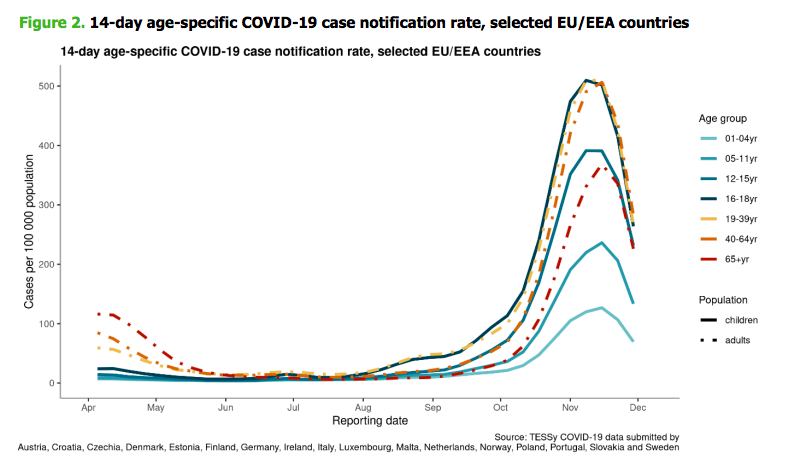Schools were the last institutions to close and can be expected to be the first to reopen. But just how big a part do schools play in the spread of Covid-19? The European Centre for Disease Prevention and Control has published a review of the evidence from 17 countries and concluded that the reopening of schools cannot be blamed for a resurgence in the virus.
Most countries closed their schools during the first wave of the epidemic in spring 2020. From 15 April, Denmark reopened schools – with social distancing – for 2 to 12 year olds. There was no increase in cases following this reopening, according to the ECDC. Similarly, South Korea’s phased reopening of schools between April and June was not found to be associated with any sudden rise in paediatric cases.
The return of schools after the summer holidays is another matter. The second wave of Covid-19 which has afflicted most European countries, and many countries beyond, can be traced to the period – between mid-August and mid-September – when schools returned. However, this period also coincided with people going on, and returning from, foreign holidays, a return of universities and, in many cases, a return to the office. It was a period in which life appeared to be getting back to some sort of normality in all sorts of ways.
Analysis of the age profile of Covid infections, however, does not point to schools being especially important in the early-stage growth of the second wave. Although the report does also observe that ‘school closures can contribute to a reduction in SARS-CoV-2 transmission’.
But had schools played a big role you would expect to have seen a sharp increase in cases among children of school age a week or two following the return to the classroom. Instead, the ECDC noted that Europe’s second wave began with a sharp increase in cases among 19 to 39 year olds in mid August. Cases among 16 to 18 year olds also increased around this time, but the curve of infections among younger children rose much more gradually, in step with infection rates in the over-40s.

Across the 17 countries studied, there were significant numbers of clusters of Covid cases throughout the autumn – 1185 in secondary schools, 739 in primary schools and 283 in nurseries. Yet most of these clusters involved fewer than 10 children or adults. In 16 out of the 17 countries studied, the researchers noted, some kind of social distancing was introduced into classrooms, while 15 countries adopted such measures as staggered arrival times and 14 cancelled some indoor group activities such as sports of social events.
The Centre concluded: ‘The return to school of children around mid-August 2020 coincided with a general relaxation of other NPI measures in many countries and does not appear to have been a driving force in the upsurge in cases observed in many EU Member States from October 2020.’







Comments